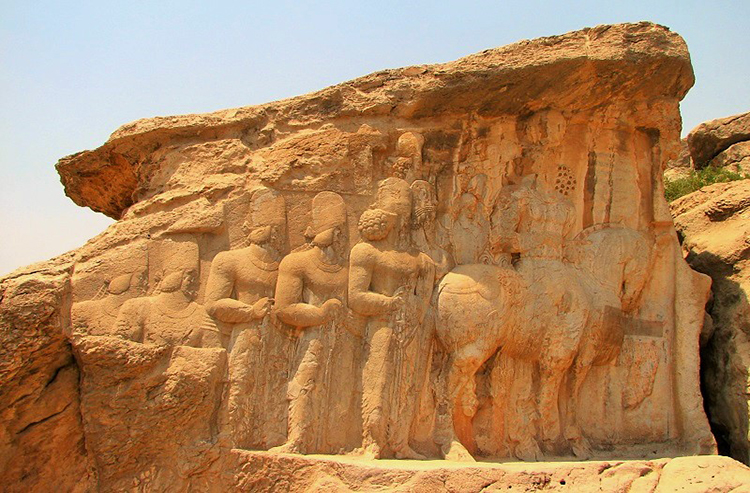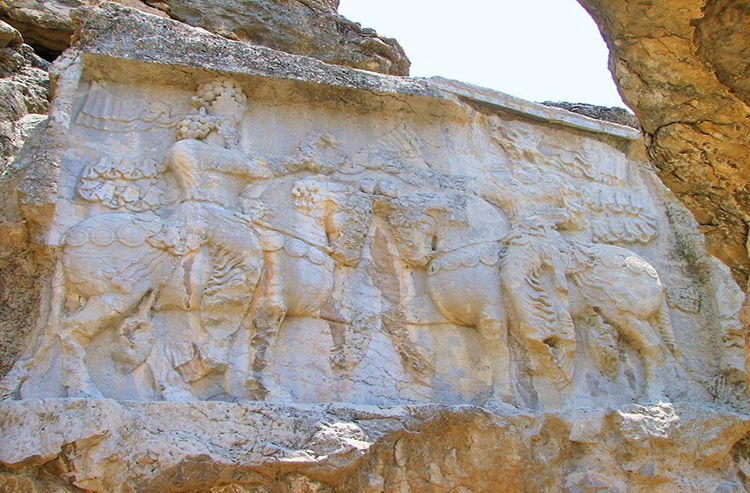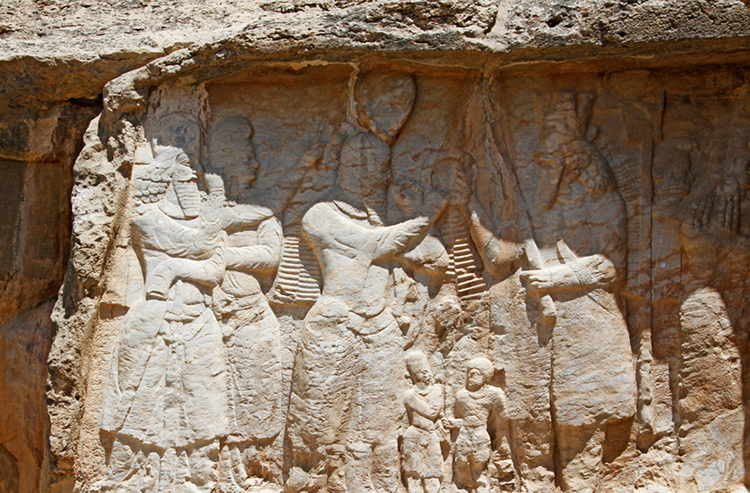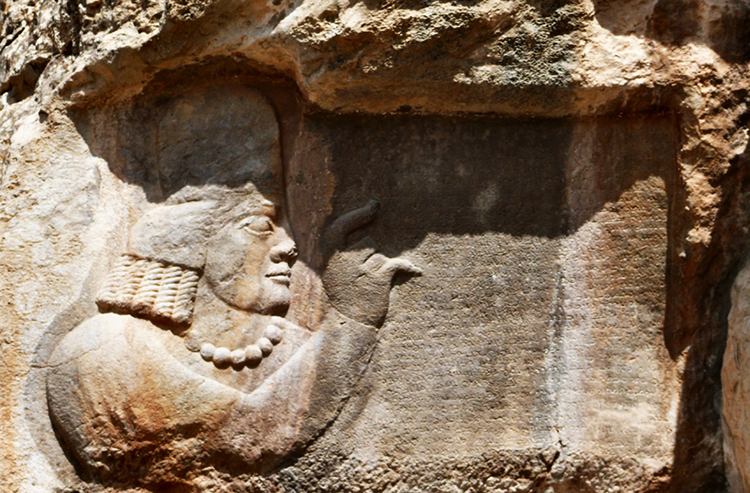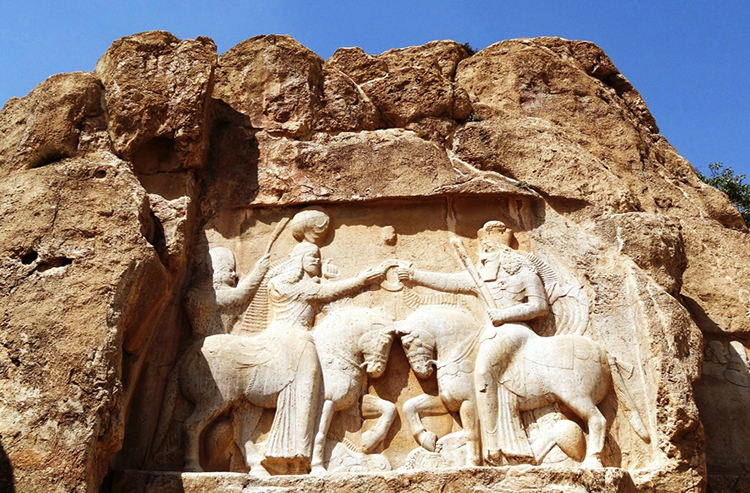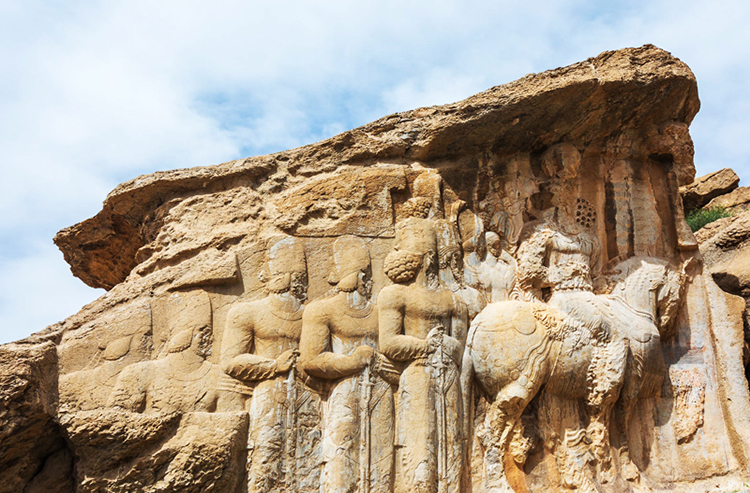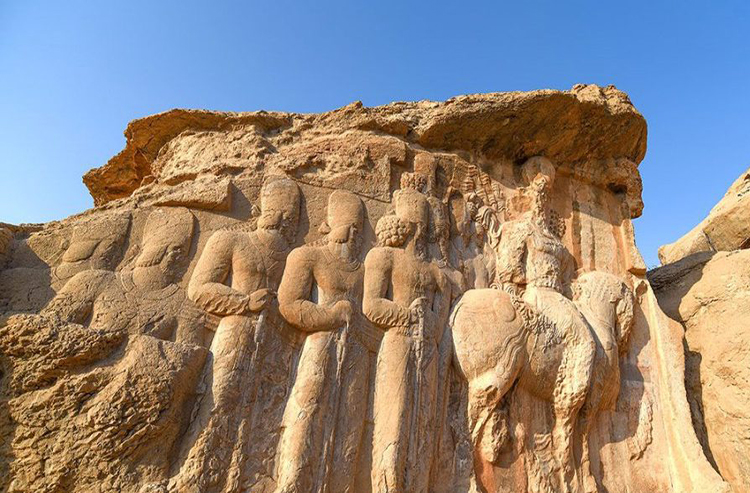Naqsh-e Rajab
Naqsh-e Rajab contains the reliefs which carved on the rock. To show the power of the Sasanian Empire these reliefs carved with the command of the kings. You will see four reliefs which narrate the coronation of Ardashir I and Shapur I, Shapur I and the courtiers, and Kartir. Kartir was an influential Zoroastrian priest or Mobad during the Sasanian kings in the 3rd-century.
The most important part of this Iran historical site is the carving of the high Zoroastrian priest Karter, Mobad-e Mobadan (Priest of Priests) under three Sassanian emperors: Shapur, Bahram I and II. He was responsible for setting up a religious state under the Sassanian. The inscriptions relate the events in his life, his rise through the clerical hierarchy and his attacks on heretic religions. He is the only non-royal person appearing on a carving.
The coronation of Ardashir I
One of the reliefs of Naqsh-e Rajab narrates the story of coronation of Ardeshir I. You will see a rock relief with a width of 4.5 meters and a height of 2.5 meters that situated on the east side of this archaeological site. Ardeshir's father inflicted a defeat on the Artabanus V of Parthia and then sat on the throne. After his death, the Ardashir I was next in line to the throne. This relief indicates the scene of the coronation of Ardashir I. The figure of Ardashir I was carved on the left with the crown of the Sasanian Empire. Moreover, Ahura Mazda was carved on the other side with Barsom (A branch of the sacred tree) on his hands.
The Relief of Kartir
On the left side of the Ardashir I, you will see a small relief which belonged to the Kartir. Kartir was an influential Mobadof the Sasanian Empire. You will see no beard on his face. Also, a pearl necklace was featured in this relief. He raised his right index finger to pay tribute to the Shapur I, pointing to the inscription behind him. The inscription includes thirty rows on Pahlavi scripts of the Sasanian era.
The coronation of Shapur I
This carving is one of the prominent reliefs that remains from the Sasanian era. You will see a rock relief with a width of four meters and a height of three meters that narrates the scene of the coronation of Shapur I. The figures carved in this relief show that the king rides on a horse and takes the ring of kingship from Zoroastrian god.
Shapur I and the courtiers
On the north side of Naqsh -e- Rajab, you will see the figures of Shapur I and the courtiers that carved in the relief. It shows that Shapur rides on a horse and nine members of the courtier stand behind him. There is an inscription next to the horse that carved on Pahlavi scripts from the Sasanian era as well.

